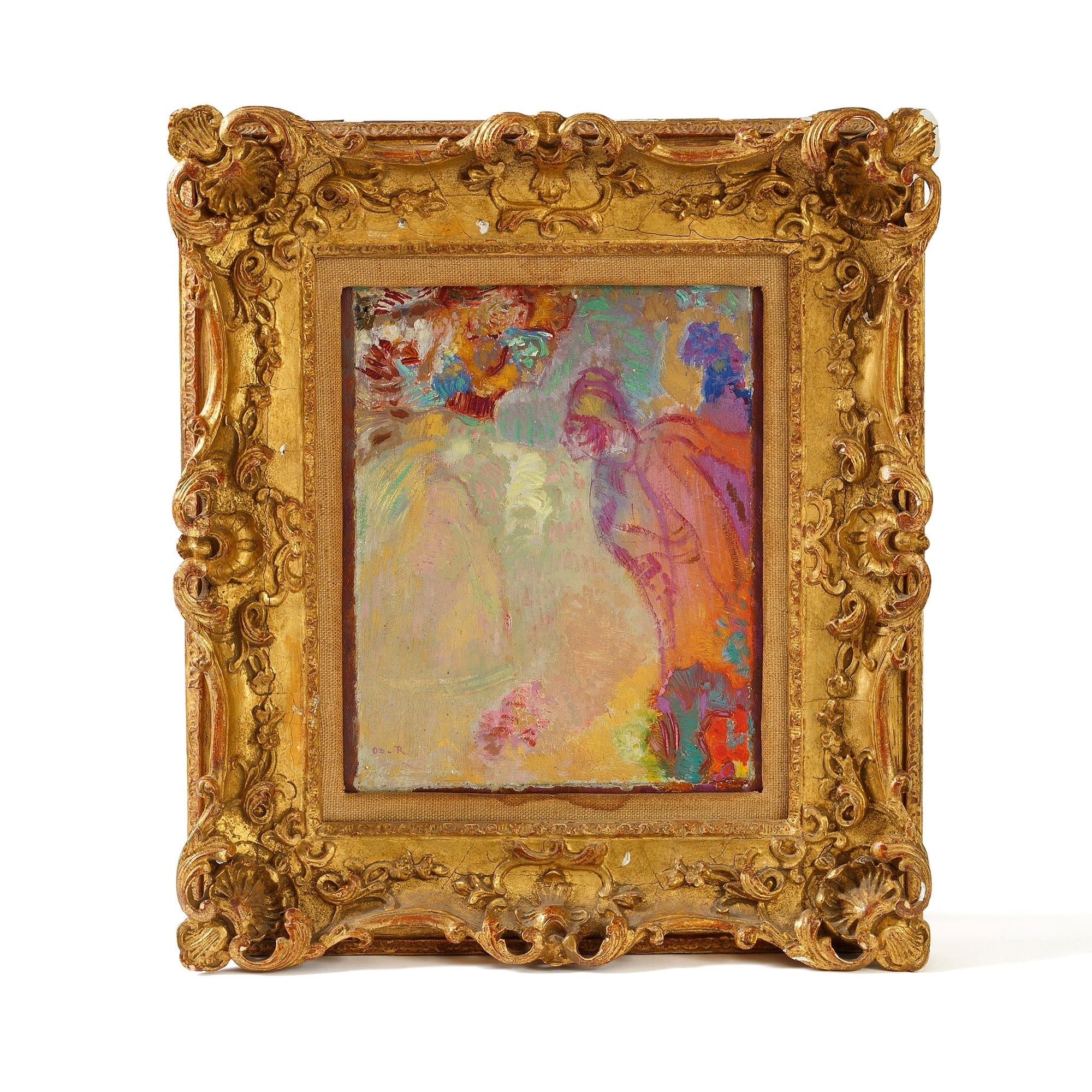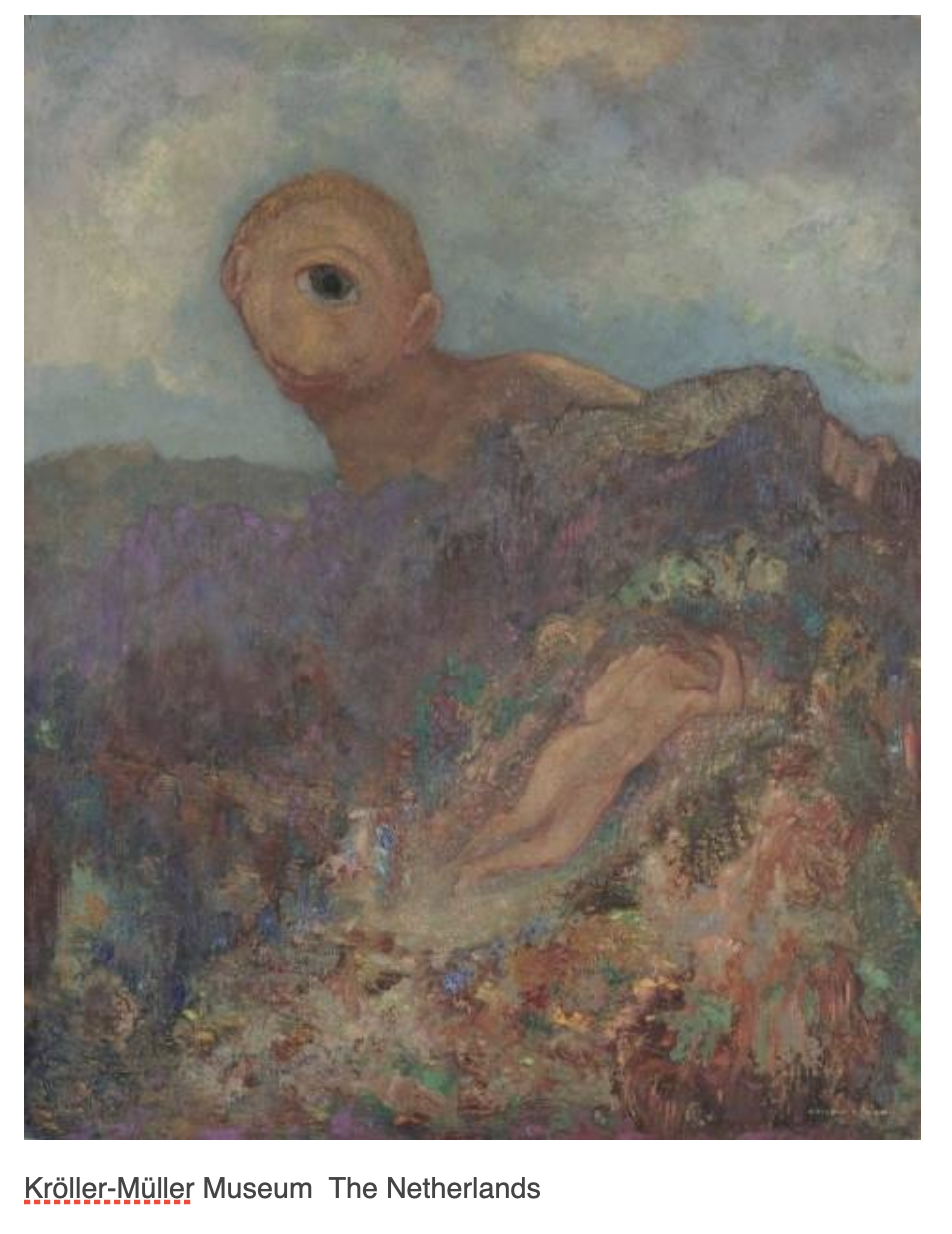How an Impressionist Painter Is Behind a 21st-Century Regency Romance Press
James W. Gaynor shares his story.

Written by James W. Gaynor
l'Apparition is listed in the Impressionist / Symbolist painter Odilon Redon’s catalogue raisonné as “from the collection of James W. Gaynor.” This suggests the painting and I share an elegant life, involving a social whirl of gallery openings and museum galas. In real life, however, I have lived in the same small studio apartment for almost 50 years, surrounded by sculpture I have made from objects found on New York City streets and art made by living artists whom I know.
So how did a poet-bartender-dogwalker-book critic-yoga teacher- etc., etc., wind up as the owner of such a valuable piece of painted wood?

Long Story Short
In 1992, I came into an inheritance. For a variety of Oedipal reasons, I was not completely comfortable with this largess. In something resembling an extended psychotic/economic episode, I decided that it might be interesting to spend it all on one outrageous thing.
I had always wondered what it might be like to live with museum-quality art, and I thought perhaps that might be suitably bizarre to find myself brushing my teeth in front of a masterpiece. I wouldn’t exactly own it, but we’d share some space and see how it went. It was very much a 90s relationship
At the time, I covered the auctions at Sotheby’s and Christies for the New York Observer. I knew a few gallery owners and had an interest in the dark-money economy of the Impressionist market. The stage was set.
In the fall of 1993, a Redon failed to sell at the Sotheby’s Impressionist auction, and I was suitably incensed on the artist’s behalf. Redon had long been a favourite of mine — I had stumbled onto his le Cyclope (1914), at the age of 23, and had an out-of-body experience. In the painting, the Cyclops Polyphemus spies on the sleeping Nereid Galathea. Thanks to Redon’s depiction, I suddenly understood the one-eyed giant was an enormous erect penis. Greek myth opened in a way that I had never imagined, as did my awakening understating of erotic pursuits. Scorpio that I am, I have always been grateful to my buddy Odilon for cuing me in on the secret.

Although open to a variety of interpretations, I had been drawn to l'Apparition in the sale for what I saw as an interesting evocation of a favourite Redon theme, the head of John the Baptist delivered to Salomé — only in the painting Herod’s stepdaughter was depicted as a version of a belle epoque dance-hall girl.
Plus, when I examined the painting out of its original frame, an artist friend noted that there seemed to be thumbprint and hair imbedded in the paint in mostly unseen corner at the edge of the frame. Odilon’s print! Perhaps a strand containing his DNA! It was all I needed to know: I made an offer, and the painting came to live with me.
Our time together was short — a friend asked me if I would lend it to the museum at Vassar, and I did. After a few years, the painting moved on from Poughkeepsie to one welcoming Redon-less college museum after another.
In the intervening 30+ years, I haven’t given much thought to the painting’s life after my death — after all, it had a job to do, and I had abandoned my struggling freelance career, pursuing a late-in-life switch into corporate communications. l'Apparition and I have lead separate lives — the small oil on panel (circa 1900) moves on loan from one university museum to another. And from time to time, I’ve visited and smiled at the placard stating, “On loan from …”
Ever Onward
In a somewhat surprising turn of events, I’ve started a new career as an editor and publisher of Nola Saint James’s Regency-era romances. Nola Saint James – Welcome to the Regency World . And it’s now time for me to let l'Apparition go in support of disseminating Nola’s belief that “everyone deserves a happy ending.”
Odilon’s and my little piece of wood is now living at NYC’s Macklowe Gallery, where I am sure it will soon find its next someone. And I will move into a new chapter of my life, thanks to Odilon and his understanding of the cyclops as a metaphor for the roaming and ravaging male member.
It turns out that it was a good idea at the time. Who knew?
About the writer
James W. Gaynor, the author Jane Austen’s Pride and Prejudice in 61 Haiku, is a poet, sculptor, translator, professor, editor and writer. He has worked as an editor at Grosset & Dunlap, Cuisine magazine, Scriptwriter News, Forbes Publications, and recently retired as the Global Verbal Identity Leader for EY. His articles, book reviews, poems and essays have appeared in The New York Observer, The Gay and Lesbian Review / Worldwide, Means Happy and The Good Men Project,
I’ll Miss You Later, Gaynor’s memoir of the AIDs epidemic in New York City is the subject of a documentary film by Annie O’Neil to be released in 2025.His most recent collection of poetry, 20 Poems Inappropriate for Weddings + Funerals,
(https://tinyurl.com/5n99rkjf) features forewords written by Regency-era novelist Nola Saint James and Rabbi Dr. Jo David (who, as it turns out, are the same person).
James W. Gaynor on Naked Men Talking
James W. Gaynor was recently a guessed on the podcast, Naked Men Talking.
In the conversation, we talk Studio 54, New York City in the early 80s, and finding poetry in trauma.








